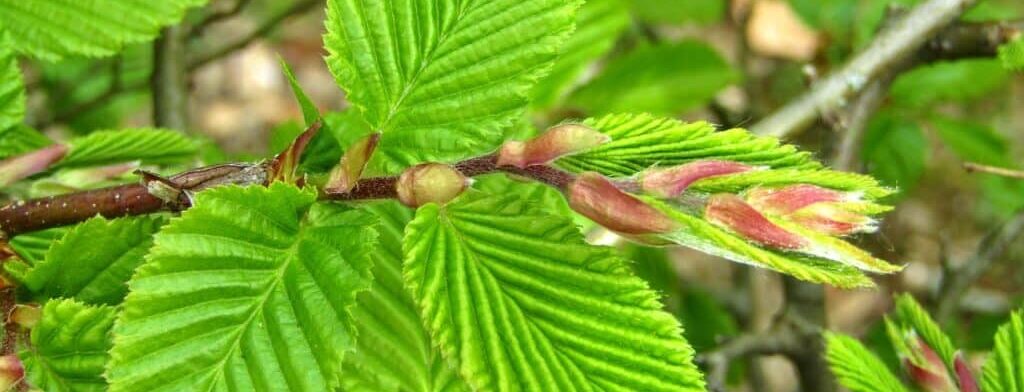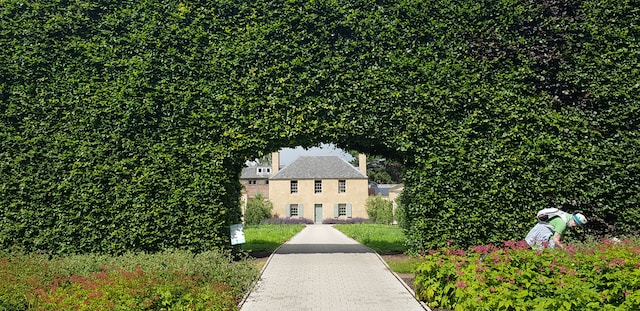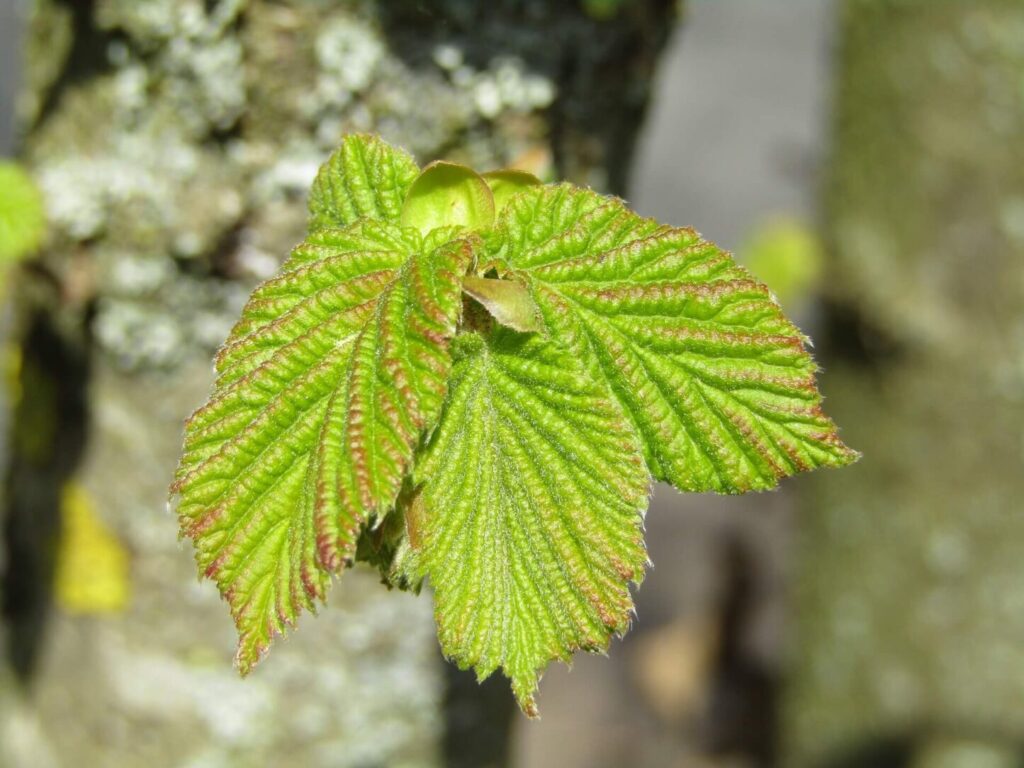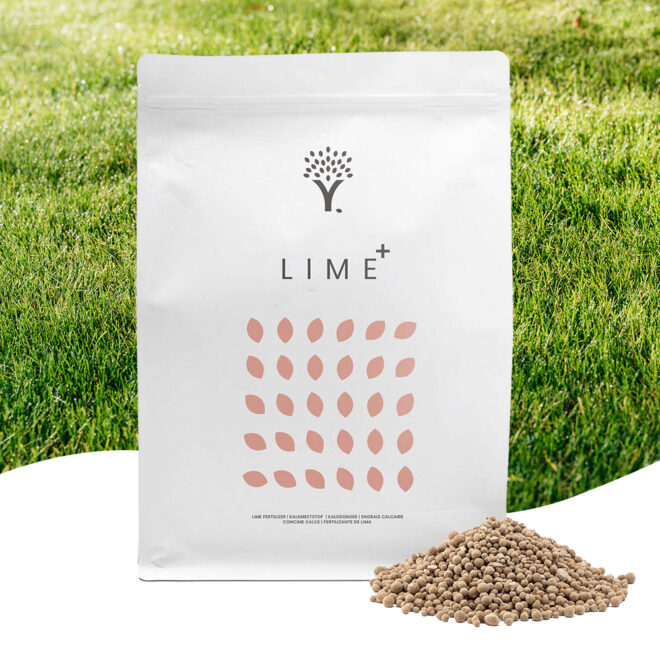Log in or create new account to save this product to your wishlist.

Fertilising beech hedges: why, how, and when?
Beech trees make beautiful hedges. But if you want the best results, you'll need to provide excellent nutrition. Find out how to fertilise your beech plant!
🌱 All important maintenance moments for your lawn during the year. Leave your email and we will send you the lawn calendar for free.
Enter your email
Receive the lawn calendar in the mail
Enjoy a green lawn all year round!

- Order by 2PM = shipped today
- 250.000+ satisfied customers!
- 60 day satisfaction guarantee
Do you have a beech hedge? Is it looking a little thin and sorry for itself? Fertilising beech hedges is the surest route to a robust bush with excellent leaf density.
- How to grow a beech hedge
- Why fertilise a beech hedge?
- When to fertilise a beech hedge?
- Which fertiliser to use for a beech hedge?
- Fertilising your beech hedge with cow dung pellets
- Fertilising your beech hedge with lime
- How to fertilise your beech hedge
- Beech hedge maintenance
- Tips for fertilising your beech hedge
- FAQs
Beech hedges are the perfect living privacy barrier, providing dense protection for your garden and home. But there’s no getting away from it: you need to fertilise your bush for the best results.
This article explores why, how, and why to fertilise your beech hedge.
Ready? Let’s get feeding!
How to grow a beech hedge

The beech is a very successful stand-alone tree. However, it also works perfectly in hedge form, offering beautiful green or red leaves and plenty of density to provide privacy and beauty for your garden.
Beech hedges are popular in British gardens because of their hardiness and attractive, dense growth. These robust plants are relatively low-maintenance and can last for years if properly cared for.
However, for best results, you need to fertilise your beech hedge for optimal growth. The first feeding should come at the planting stage, then annually throughout the plant’s lifespan.
Why fertilise a beech hedge?
Sure, you see beech trees growing successfully in forests and woodland, and no one feeds them.
But when beech trees are pruned into hedges, you disturb their natural growing cycle and plant them closer together than they’d grow in the wild. This effectively stunts the plant’s growth and drains the earth of nutrients because they’re so densely packed together.
So, regular feeding overcomes these obstacles to growth.
Fertilising provides the plant with all the necessary nutrients and boosts the plant’s resistance to diseases, pests, and other stress factors.
Indeed, a well-fertilised hedge will grow faster and provide a beautifully lush density for greater privacy.
When to fertilise a beech hedge?

Like all plants, the optimal window for feeding is during the growing season. Beech trees aren’t particularly voracious feeders, so I recommend fertilising your beech hedges once a year.
However, if you’re pruning your hedge, you should fertilise again after cutting the bush back to compensate the plant for the lost wood.
The best time to fertilise is early spring when the plant comes out of its winter dormancy. Then, apply a second feed after pruning if you’re neatening up the hedge later in the year.
Which fertiliser to use for a beech hedge?
There are two types of beech hedge fertiliser: organic or non-organic. Both have advantages and disadvantages, so read on to help you decide which to choose.
Organic fertilisers for your beech hedge
Organic fertilisers are derived from natural materials, such as chicken/cow manure or blood and bone meal. Alternatively, use homemade or shop-bought compost made from well-rotted grass clippings and garden waste.
These fertilisers offer slow-release nutrition, making them a more sustainable and long-lasting nutrient source.
Organic feeds are typically safer for the environment, with less chance of chemical burn.
Non-organic fertilisers
Chemical fertilisers are synthetically produced. However, they tend to offer quick nutrient release, getting the necessary nutrition to your plants for faster results.
So, if you want quick results, there’s nothing wrong with non-organic fertilisers. Ensure you read the label and follow all environmental cautions to ensure you don’t burn your plants or damage the soil or your local ecosystem.
Fertilising your beech hedge with cow dung pellets

One of the most popular ways of fertilising beech hedges is with the assistance of cow dung granules. These offer a rich source of organic nutrition and can help improve the soil structure, increasing water retention around your beech hedges.
Win-win!
How to use cow dung pellets
Distribute the pellets or granules over the soil within the plant’s branch span. Then, work them into the ground with a rake.
Make sure you work the pellets well into the soil to prevent them from washing away during watering or heavy rain.
Well-rotted manure shouldn’t have a strong aroma like fresh dung. So, make sure you use well-composted manure; otherwise, you’ll stink out your garden! Dung can also attract insects and weeds, so keep a close eye on the earth around your beech hedges after using manure pellets.
Fertilising your beech hedge with lime
Alternatively, use horticultural lime to fertilise your beech hedge. This will improve the soil condition while reducing acidity — the beech plant prefers neutral or slightly alkaline soil.
Don’t add lime and other fertilisers at the same time. They can react against each other and burn your beech hedge’s roots.

- Excellent nutrition for lawns and beech hedges
- Lowers acidity and stabilises soil pH
- Easy to apply
How to fertilise your beech hedge
This is pretty straightforward. Follow these steps for excellent results:
- Choose the correct fertiliser: it’s a good idea to test your soil for specific nutrient deficiencies. Alternatively, go for a fish blood and bone mix.
- Prepare the soil: remove weeds and other plants that might compete for nutrition and water. Loosen the dirt around the base to ensure the feed gets absorbed rather than washed away.
- Apply your fertiliser: always read the instructions on the packaging, and follow them to the letter. Distribute the fertiliser around the root range, and work it lightly into the soil with a rake.
- Water your hedge: provide a slow, deep watering to ensure the fertiliser penetrates the soil.
Beech hedge maintenance
Check your hedge for signs of pests or disease. Keep the soil clear of weeds, and prune the plant regularly to promote growth and ensure it remains dense and compact.
If the leaves discolour or you spot an insect infestation, take immediate action. And remember, pruning your beech hedge is an essential task in beech hedge maintenance.
Tips for fertilising your beech hedge
- Choose organic fertilisers: these are more sustainable and long-lasting than chemical fertilisers. They’re also safer for the environment and less likely to scorch the plant.
- Apply fertilisers during humidity: it’s best to apply fertilisers while the air is humid. This helps ensure the fertiliser penetrates the soil, reaching the roots.
- Distribute the fertiliser evenly: spread the feed evenly over the root range of your beech hedge, and ensure that each plant gets plenty of nutrition.
FAQs
Fertilise your beech hedge in the spring, just as the plant wakes up from its winter dormancy. Avoid feeding during a drought. If you prune later in the year, apply a second feeding; otherwise, once a year is ample.
We prefer organic fertilisers because they’re longer-lasting, offering a slow-release feed for your plants. They’re less likely to scorch your plant’s roots and are better for the environment. Our favourite organic feeds are chicken or cow manure or fish blood and bone.
If you want to encourage density within your beech hedge, feed it at least once a year. And although it might feel counterintuitive, prune the bush, which will promote new growth.
Any questions?
I hope you’ve got all the answers you need to feed your beech hedges. But if you have any questions, please don’t hesitate to get in touch. We’ll reply as quickly as possible.
And don’t forget to check out our comprehensive Help & Advice section — for expert tips on lawns and gardens!
Thanks for reading!
-
How to Build a DIY Greenhouse: A Practical Guide for Smart SpendersImagine extending your growing season throughout the year, nurturing tender plants regardless of the weather, and creating a personal garden sanctuary. This is precisely what a DIY greenhouse offers you. Let’s learn how to build one.Read more
-
How to Grow Eucalyptus in British GardensWith a little love and care, eucalyptus trees can thrive in English gardens. Since they don’t germinate well without proper help, there are not considered invasive. So, there is no reason not to plant them if you enjoy their looks.Read more
-
Transform Your Garden with All-Year-Round Flowering PlantsDid you know you can enjoy blooming flowers even in January? With the right selection of all year round plants, there’s no need to wait until spring to add some colour to your garden.Read more
-
How to Create a Butterfly Garden: A Simple Guide for British GardensThe UK's butterfly population includes 59 different species. These beautiful winged creatures face a steady decline because of habitat loss, pollution and changing weather patterns. Your garden can become a vital link between nature reserves and natural habitats. Let’s explore how.Read more
-
Volcanic Rock Dust for Your Garden—Application and TipsDid you know that volcanic rock dust is a brilliant organic soil improver? This article explains exactly what it's good for and how to use it properly.Read more
-
How to Use Landscape Fabric ProperlyIf weeds or erosion in your garden are troubling you, landscape fabric might be the solution. We’ll explain how and when to use it properly, just keep on reading.Read more
-
Hostas: A Complete Care GuideIf you have a north-facing garden or some shady corners on your property, hostas are the plants for you. These green delights thrive particularly well in partial to full shade and require consistently moist soil to perform at their best.Read more
-
How to Grow Grapes in Your Garden: A Simple Step-by-Step GuideGrapevines produce some tasty fruits, but often they are simply grown for their gorgeous leaves. Whatever your motivation may be, we have a guide on how to grow grapes for you.Read more
Leave a comment
Your answer will be displayed on the site and the interested party will be notified by email.
Leave a comment
Have a question or want to share your experience? Leave us a comment.

- Order by 2PM = shipped today
- 250.000+ satisfied customers!
- 60 day satisfaction guarantee

- Order by 2PM = shipped today
- 250.000+ satisfied customers!
- 60 day satisfaction guarantee

- Order by 2PM = shipped today
- 250.000+ satisfied customers!
- 60 day satisfaction guarantee

🌱 All important maintenance moments for your lawn during the year. Leave your email and we will send you the lawn calendar for free.
Enter your email
Receive the lawn calendar in the mail
Enjoy a green lawn all year round!





















Comments (0)
There are no comments yet. Well then, what are you waiting for to
Be the first to write your comment!inaugurate this pretty page?
Do you have some comments?